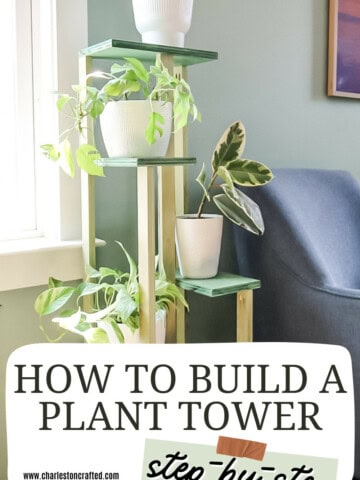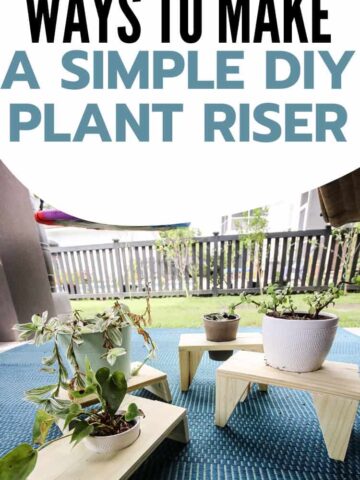Interested in the Shingle Plant? This beautiful, unique plant is really easy to care for! Here's everything you need to know.
I am always looking for new, unique houseplants to add to my collection. While I love all lush greenery, sometimes the plants can all start to look the same.
That's why I was excited when a new plant stood out to me in the Home Depot plant section - the shingle plant!
They stand out because each plant comes with a tall wooden board.
That's because shingle plants like to climb up wood and grow flat to the board - with the leaves looking like shingles!
Let's talk about shingle plant care to see if it might be the right plant to add to your collection!
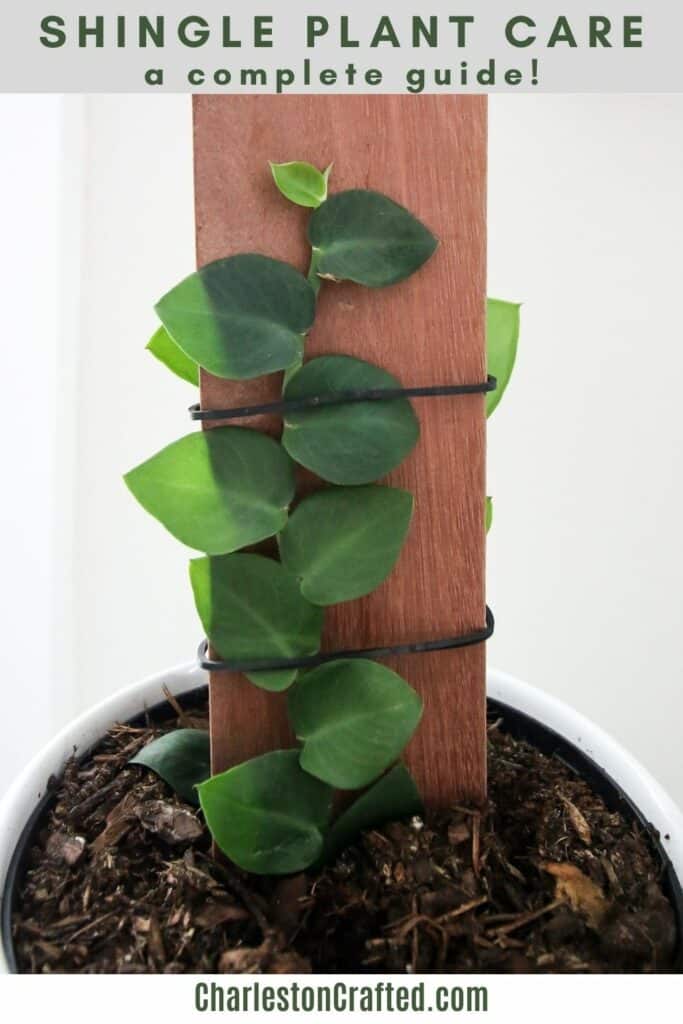
What is the shingle plant?
The Shingle Plant is the street name for Rhaphidophora hayi. This is a climbing plant that sprouts aerial roots from its leaf nodes. The roots will dig into whatever they can - they like wood - and dig into it, staking itself.
Are shingle plants rare?
Not any more! You can easily and commonly find these plants distributed by Costa Farms. I got mine at Lowes, and Home Depot and Walmart carry them, too!
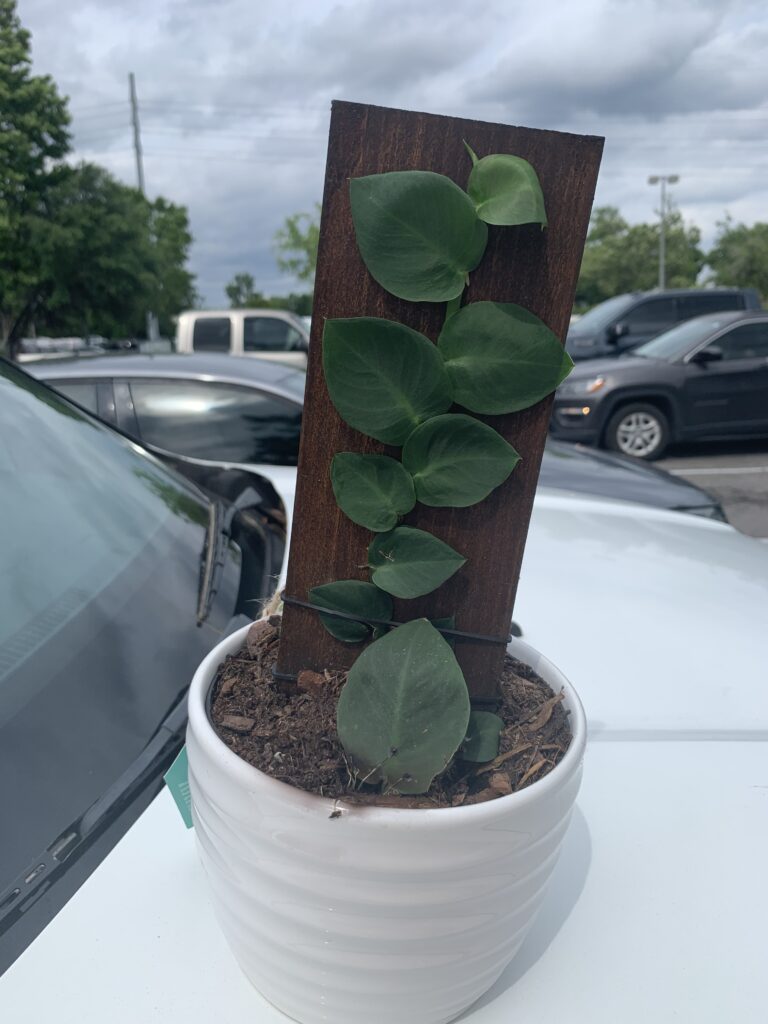
Is shingle plant toxic?
Yes, the shingle plant is toxic if eaten and can cause tingling and burning in the mouth and digestive system.
Is shingle plant safe for cats?
No, Shingle Plant is toxic if eaten and should be kept out of reach of pets and children - or any adults who might take a bite.
What kind of things can a shingle plant climb?
The cool thing about shingle plants is watching them climb! The leaves grow bigger and happier if they have something to climb. Here are some ideas for what your shingle plant can climb:
- Wood fence post
- Wood board
- Moss pole
- Trees
- Branches from a tree
- Driftwood
- Cork
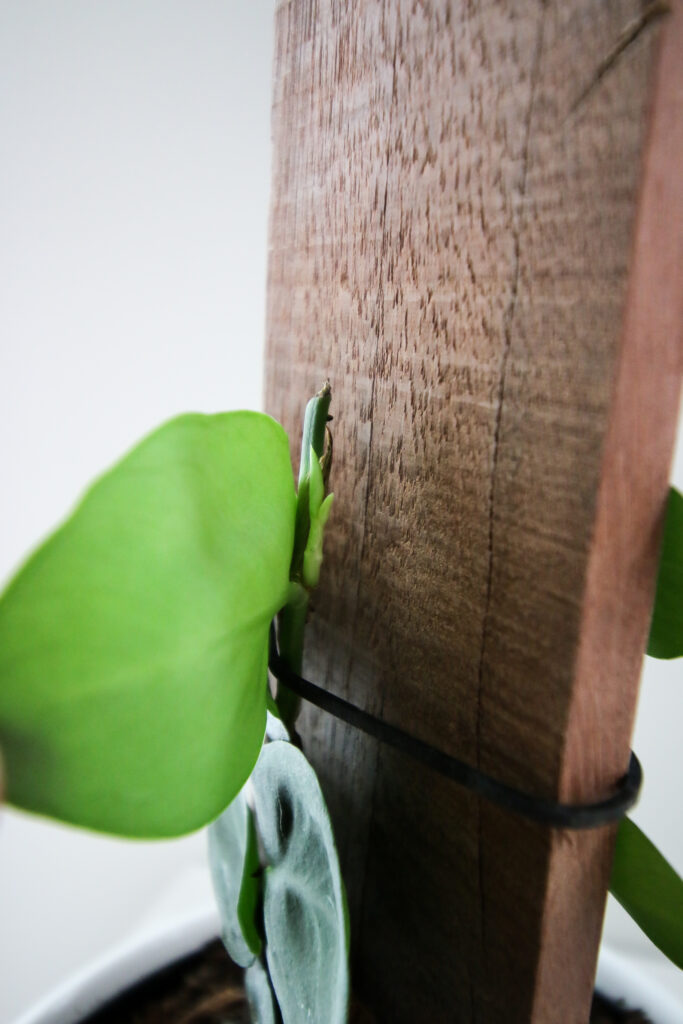
What are the best boards for shingle plants?
Shingle plants do best when growing up a board with a slightly rough finish. This gives the roots something to dig into. Bamboo or other ultra-smooth wood is a bit slick and will be more difficult for the roots to attach to.
How do you mount shingling plants?
- Plant your shingling plant in soil towards the front (or front and back if you want it double-sided) of a pot.
- Use your fingers to gently dig a hole in the soil behind your plants, roughly the size of your board.
- Wedge the board into place and press the soil in around it until secure. Make sure it's deep enough to stand up on it's own.
- Gently place the plant along the board.
- Use rubber bands or tied twin to hold the plant gently in place.
- Mist with water and the roots should work their way into the boards. Aerial roots develop best in high humidity, so misting them is important!
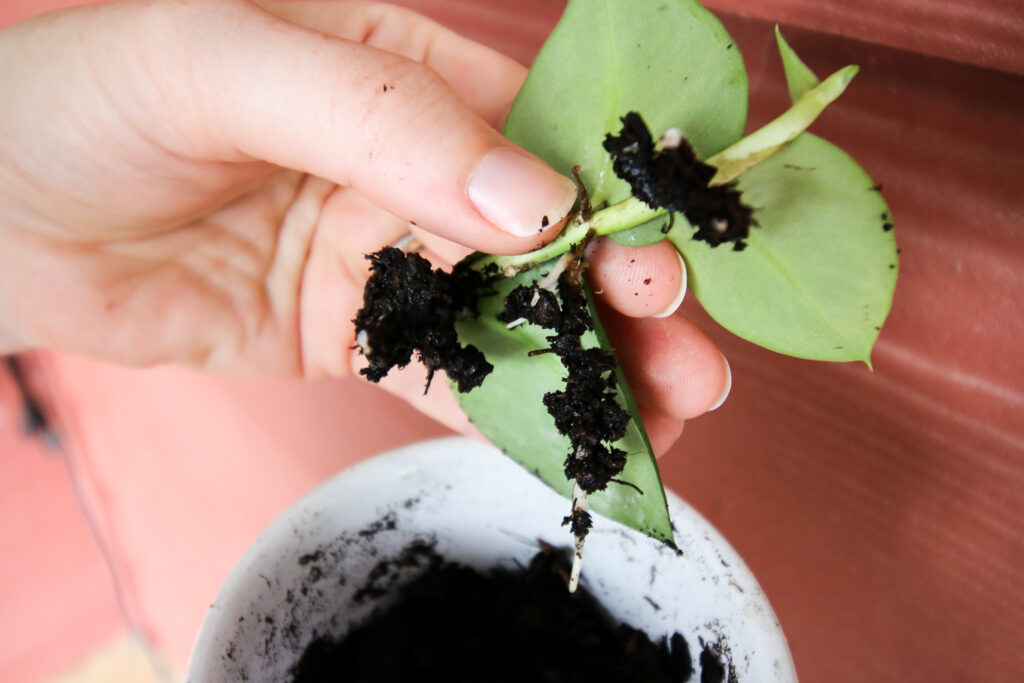
How to repot shingle plant
Shingle plants are pretty fast growing and can get root bound pretty easily.
To repot a shingle plant:
- Gently remove the plant from it's soil. If it's root bound, you might need to gently pull root out from drainage holes.
- If there are any issues with the soil, you can rinse it off the roots. If the soil is healthy, don't worry about it.
- Choose a new pot about 2 inches bigger in diameter than the old pot. Be sure it has good drainage holes. Here's how to drill drainage holes in ceramic pots.
- Add new soil to the pot and gently place your plant. Place your board or climber behind the plant and fill in around both with soil to secure.
- Gently tie the plant to the board to help encourage it to root in place.
How to grow shingle plant
The shingle plant grows quickly in the right conditions - high humidity, moist soil, and bright, indirect light.
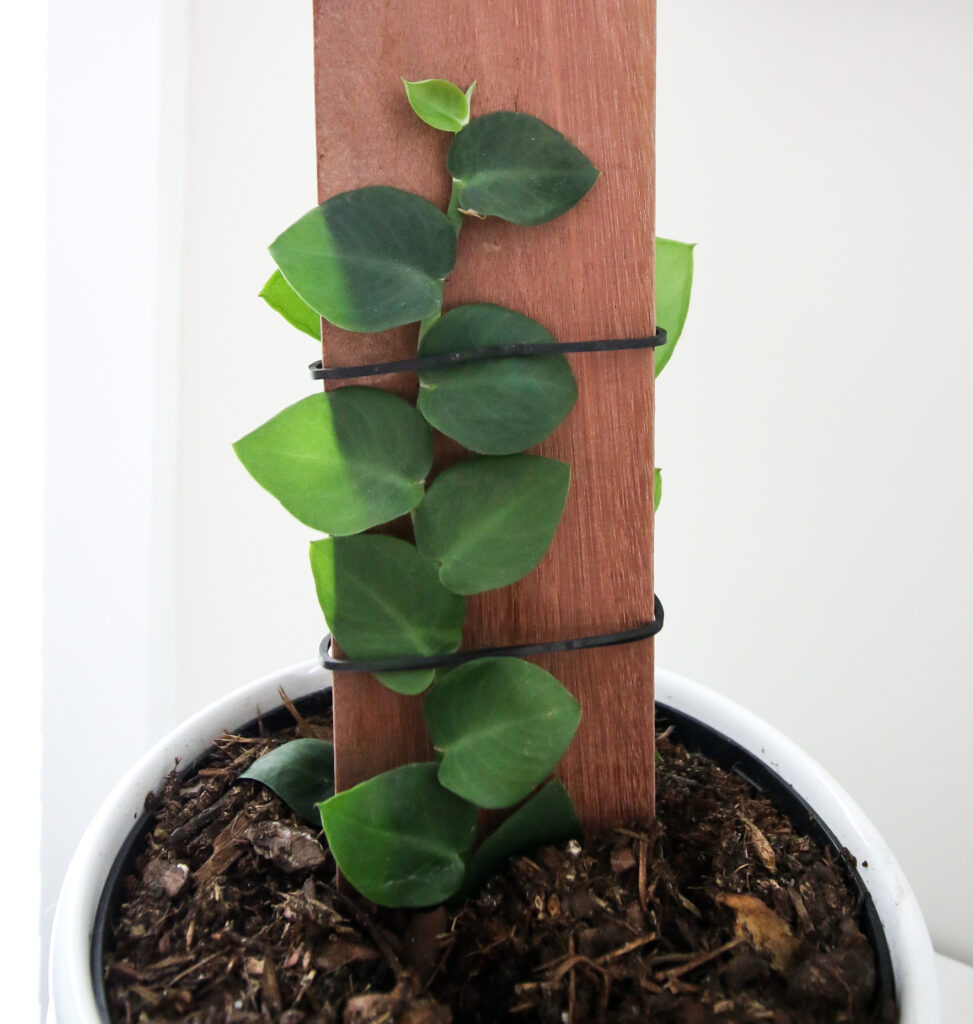
How to care for shingle plant
Shingle plant is an easy tropical plant to care for and is very beginner friendly!
How much light does a shingle plant need?
The shingle plant thrives in bright, indirect light. Direct light can lead to sunburn and crispy brown spots on the leaves.
Not enough light and the new leaves will be very small or non existent.
How much water does a shingle plant need?
Shingle plants love high humidity levels and moist soil. I water my plant 1 time per week but spray it with a mister on the leaves of the plant 3-4 times per week.
Smaller plants you can also cover with a plastic bag to create a steamy "green house" environment, though you obviously miss out at looking at the plants through the bag. This is great for when you are propagating it, though!
What kind of pot and soil does a shingle plant need?
Shingle plants like to be moist, but not soggy. So, go for a well aerated and well draining soil type. Make sure you have good drainage in your pot!
Shingle plant rhaphidophora is a fast growing plant, so be sure to select a pot large enough for room for the root system to grow - and to hold your board or other climbing structure.
Want to show your houseplants some love?!
--> How to clean plant leaves
--> How to propagate a plant (free eBook!)
--> When to repot a plant
--> Rotating houseplants
--> When to cut leaves off of plants

How to propagate shingle plant
Shingle plant is super easy to root! You can take a cutting of any length - I like to cut mine when it get to the end of my climbing board - and root it in soil or water.
To root in water, remove the bottom leaf or two and stick in a jar.
To root in soil, you don't need to remove any leaves. Place on top of a cup of moist soil. Cover with a plastic bag to create humidity and allow to root in indirect light!
Looking for something?
We've been doing this since 2012 so we have a LOT of blog posts!
Search stuff like: Ceiling Projects | DIY Plant Stands | Thrift Flips


Hello, I'm Morgan, half of the creative force behind CharlestonCrafted.com! With a passion for DIY that dates back to 2012, I've transformed three homes and now I'm dedicated to helping others craft their dream spaces. Let's turn your house into a home together!


